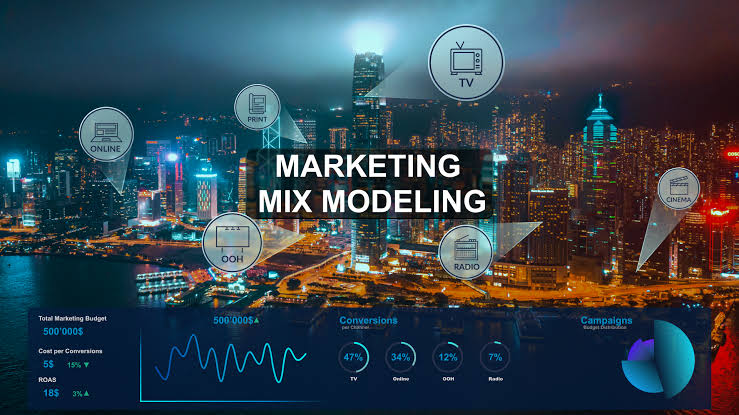By Zion Rufus
Marketing Mix Modelling (MMM) is experiencing a major comeback as advertising budgets come under increased scrutiny and the need for improved solutions to justify and optimize marketing investments becomes more pressing.
Evidence-based planning and durable measurement solutions are driving this resurgence, with MMM utilizing accurate, timely, and relevant data to excel in today’s complex media and retail environment.
A new report titled “Next wave measurement: Marketing mix modelling in the age of retail media,” co-released by WARC and Amazon Ads, highlights the benefits of MMM in an era where the influence of retail media is rapidly expanding. The report showcases the advancements made to facilitate greater industry adoption of MMM.
According to Paul Stringer, Managing Editor, Research and Advisory at WARC, retail has already become the fourth-largest advertising medium, surpassing audio, out-of-home (OOH) & cinema, publishing, and over-the-top (OTT)/streaming platforms. Stringer predicts that if the retail media industry continues on its current trajectory, it will outpace linear TV in value to advertisers by 2025.
Stringer stresses that marketers need solutions that enable them to understand the holistic impact of their advertising efforts.
This is where Marketing Mix Modelling plays a critical role. The knowledge paper aims to educate marketers on the wide-ranging benefits of MMM and explore how modelling can assess retail media performance.
Chris Rees, Global Measurement Lead at Amazon Ads, notes that as shopping habits evolve, retailers and marketers face increased complexity. However, with disruption comes opportunity. The rise of digital commerce has established retail media as a major advertising channel, requiring creative and compelling solutions to help marketers prioritize the right media channels to amplify their brand and achieve their goals.
The report also delves into how Marketing Mix Modelling can support key decisions faced by marketers and provide measurement across physical and digital channels, ensuring they are well-prepared to navigate the next wave of digital advertising.
Insights from the report reveal that consumers now interact with brands across more than 20 channels on average. However, the growth of retail media has added complexity for marketers, with over half of US marketers working with five or more retail media networks. Research by the ANA identifies a lack of standardization as a major challenge.
To optimize marketing plans across online and in-store channels and enhance overall sales while fostering customer loyalty, marketers are increasingly adopting Marketing Mix Modelling (MMM). MMM offers the advantage of evaluating all media and retail channels, allowing assessment of the long-term effects of advertising.
Moitree Rahman, Associate Director of Data Activation and Measurement Strategy at Colgate-Palmolive, attests to the value of MMM in providing insights: “MMM is really helping us look at the next level, at both macro and micro channels in each category. We can pinpoint where things aren’t working and identify the levers we need to pull to optimize campaigns, in flight, or in scenario planning.”
The resurgence of Marketing Mix Modelling is driven by the growing availability of data that connects marketing and retail channel activity. Marketers are finding MMM valuable in analyzing retail media environments for several reasons:
1. Identifying Incremental Sales: MMM distinguishes between sales that would have occurred regardless of marketing efforts and sales specifically driven by marketing, known as “incremental” sales. This distinction is crucial for budgeting and prioritization.
2. Isolating Channel Effects: MMM identifies the individual contributions of each channel used by a brand, taking into account category dynamics and external market factors.
3. Demonstrating Online and Offline Synergies: MMM reveals the relationship between media and retail channels, enabling marketers to understand the effectiveness of multi-channel campaigns.
4. Understanding Branding vs. Sales Activation: MMM uncovers the distinct contributions of brand building and sales activation strategies in the short and long term.
5. Durable Measurement: MMMs leverage aggregated and anonymized signals from various media channels and retail formats, enabling secure and privacy-safe comparisons across channels.
Next-generation MMM solutions offer new opportunities in terms of speed, relevancy, and accessibility. Modern MMMs deliver results within weeks or even days, eliminating the need for manual data management.
They can support tactical decisions regarding audiences, placements, messaging, and creative, providing detailed analysis by individual sales channels rather than just an aggregated view. Accessibility has also improved, with larger tech companies and specialist consulting firms promoting DIY tools that use open-source code, making MMM accessible to a broader range of advertisers.
Vasileios Kourakis, Global Director ROI & Media Lead at L’Oréal, emphasizes the importance of automation in dealing with an increasingly complex touchpoint landscape: “Nowadays, the complexity of the touchpoint landscape requires more data collection as new touchpoints have emerged such as Virtual Try-Ons, Ratings and Reviews, etc. The more automation, the faster the delivery.”
As retail media continues to shape the advertising landscape, Marketing Mix Modelling emerges as a vital tool for marketers, and by leveraging these evidence-based planning and durable measurement solutions, MMM empowers marketers to navigate the complexities of multi-channel campaigns, optimize marketing strategies, and achieve long-term success in the ever-changing retail environment.







Comment
No comments found.